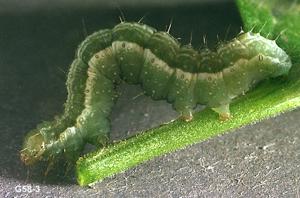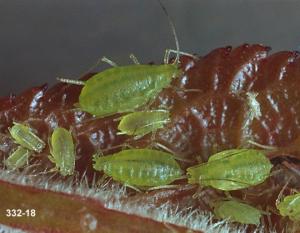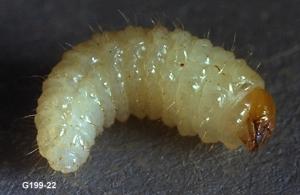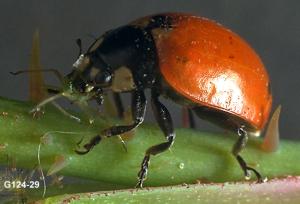|
INSECT & MITE IDENTIFICATION |
|||||||||
CONTENTS Foliage
Feeders Variegated Cutworm Sucking
Insects Spider Mites Root Feeders Mint Root Borer Beneficial
Insects Bigeyed Bug |
How to Collect & Mail an Insect, Mite, or SpiderPreserving specimens properly greatly increases the chance of getting an identification. Immature and soft bodied specimens decay and crush easily so please use the following suggestions when submitting specimens:COLLECTING 1. Try to not crush the specimen being submitted and if possible send 3 or more. 2. If you are submitting a caterpillar, maggot or other immature insect, kill the specimen in ethyl or isopropyl alcohol and, if possible, include live specimen(s) in a container with a piece of dry paper towel. When sending a live specimen please label the exterior with the word "LIVE". 3. Spiders can be sent dead with a small amount of alcohol. Please indicate if you are only interested in knowing if the specimen is a potentially dangerous species (i.e. Hobo spider, black widow, or brown recluse) or not. PACKAGING 1. Dead specimens can be placed in a container with a piece of paper towel soaked in rubbing alcohol or submerged in rubbing alcohol (ethyl is preferred). If submitting several different insects/spiders please place them in separate containers each with a separate label written in pencil. Mite samples can be submitted on leaves wrapped in paper towels and placed in a plastic bag. 2. Pack specimens in sturdy containers to prevent crushing in transit. Use soft paper in the container to cushion live specimens during shipping. 3. Identify the package with labels both outside and inside. Place a completed Insect Identification Submission Form in a plastic bag to prevent accidental moisture damage. Mail To:
OSU Insect Clinic More information can be found at http://www.science.oregonstate.edu/bpp/insect_clinic/services.htm or by contacting Dr. James Young at 541-737-1501 or youngja@science.oregonstate.edu Page updated Nov. 11, 2008
|




